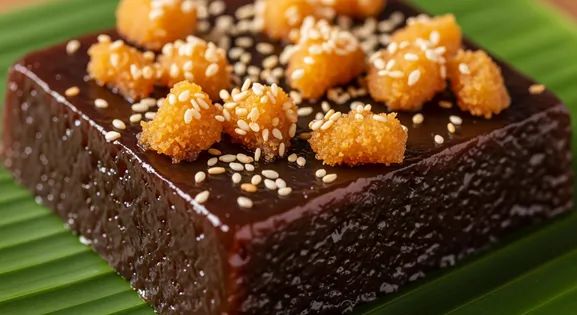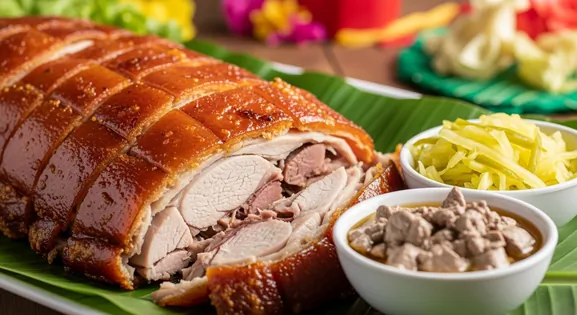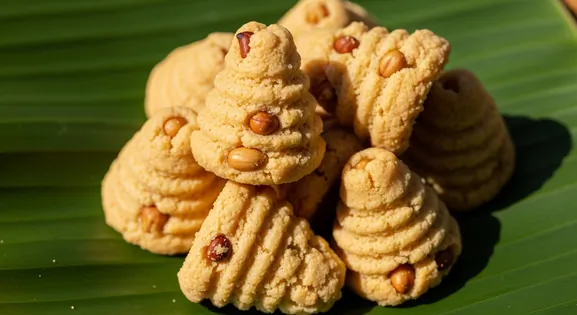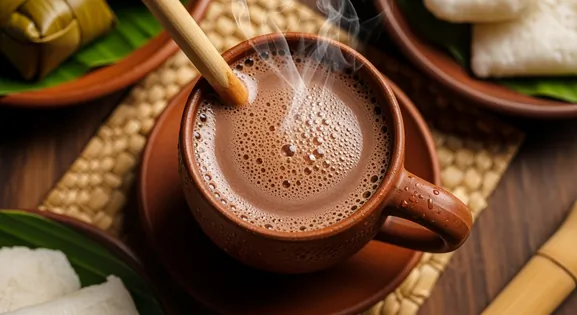Kinilaw in Bohol
Kinilaw
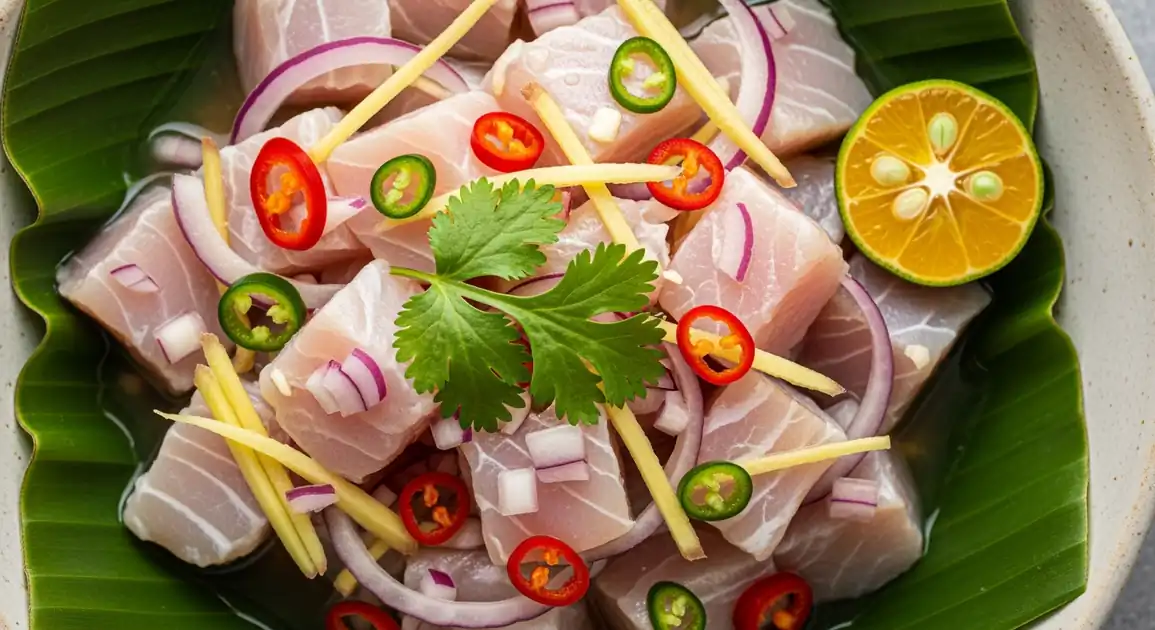
Kinilaw: A Local Culinary Staple
Stepping onto Bohol, the scent of the sea immediately draws you to its culinary heart: Kinilaw. This isn't just raw fish; it's a vibrant symphony of fresh catch, local vinegar, and often, the creamy richness of coconut milk, reflecting the island's unique flavors and maritime heritage.
New to Kinilaw? Learn all about its history in our complete guide.
Unlocking the Secrets of a Great Meal
For the freshest Kinilaw, head to local public markets like Tagbilaran Public Market or Cogon Market early in the morning when the day's catch arrives.
Bohol is famous for its Kinilaw with coconut milk ('gata'). This creamy version offers a unique, milder flavor profile distinct from other Philippine regions.
For an authentic local experience, enjoy your Kinilaw with a glass of 'tuba', the traditional fermented coconut sap wine, often found in local eateries.
Finding an Authentic Kinilaw
What to Look For
-
Made with fresh, locally caught reef fish (e.g., 'tanguigue', 'molmol') – vendor should be able to name the fish.
Freshness is paramount. Local Boholano vendors often use fish caught the same day.
-
Prepared fresh upon order, marinating just before serving.
Essential for safety and texture. Avoid pre-made kinilaw.
-
Use of local coconut vinegar ('suka tuba') and sufficient calamansi.
Acid safety net. Boholano versions rely heavily on these.
-
If ordering 'kinilaw na may gata' (with coconut milk), ensure the 'gata' is freshly squeezed/prepared.
Coconut milk adds richness but spoils quickly in Bohol's heat; freshness is key.
What to avoid
-
Kinilaw sitting out, especially versions with coconut milk ('gata').
High spoilage risk for both fish and coconut milk at room temperature.
-
Fish that looks dull, smells overly fishy, or whose origin the vendor cannot identify.
Indicates lack of freshness or questionable sourcing.
-
Insufficient vinegar/acid, leaving fish looking very raw.
Safety concern due to inadequate 'acid cooking'.
-
Stalls with poor general hygiene, especially handling fish near other foods without cleaning.
Cross-contamination risk.
A Simple Guide to Ordering
When ordering Kinilaw in Bohol, specify your preferred fish type; local favorites include tangigue or molmol. Don't hesitate to ask if they prepare it 'upon order' for maximum freshness, especially in smaller eateries. If you enjoy a creamy texture, request 'Kinilaw na may gata' (with coconut milk), a distinct Boholano style. For an authentic experience, try it with a side of rice, as locals often enjoy it as a main dish rather than just an appetizer. Always confirm the spice level to match your palate.
Exploring Bohol for the Best Kinilaw
Alona Beach
Beach-front restaurants and local food stalls offering fresh kinilaw from Panglao's waters.
Alona Beach strip, Dive shops area
Lunch, Dinner
Tagbilaran City Market
The provincial capital's main market has seafood vendors and eateries serving kinilaw.
Tagbilaran Public Market, Cogon Market
Morning, Early Afternoon
Panglao Island
Seafood restaurants along beaches like Dumaluan and Doljo serve fresh kinilaw.
Dumaluan Beach, Doljo Beach, Panglao coastal road
Lunch, Dinner
Loboc River Area
Restaurants serving tourists on Loboc River cruises often feature kinilaw as a starter.
Loboc River cruise docks, Riverside restaurants
Lunch
Vendor Tips
- Ask for 'gata' (coconut milk) to try the authentic Boholano style.
- Specify your preferred spice level - tourist areas may make it milder by default.
- Beach-side vendors with their own fishing boats or direct connections to fishermen often have the freshest fish.
- Some restaurants offer a 'kinilaw sampler' with different fish varieties - good for trying local specialties.
What You Need to Know
Dietary Information
Important Note for Travelers: Your safety is our priority. Below are the common allergens associated with the traditional preparation of this dish. However, recipes and ingredients can vary significantly between establishments. Always confirm all ingredients directly with the food vendor before ordering, especially if you have a severe allergy.
Potential Allergens
Dietary Suitability
Price Guide
Budget Tips
- Beach-side food stalls near Alona Beach offer kinilaw for 90-150 PHP.
- Order kinilaw as part of a meal set with rice and grilled fish for better value.
- Inland markets like Tagbilaran Public Market offer affordable prices (100-120 PHP).
- Some tour packages to Panglao include meals with kinilaw - a convenient option.
Serving & Seasonality
Often served in coconut shells or small wooden boats in tourist areas. Local eateries typically use simple ceramic bowls. Almost always garnished with local herbs and sometimes accompanied by a side of rice.Best Times to Enjoy
- Morning: Fresh at public markets when fishing boats return.
- Lunch: Popular among tourists and locals at beach restaurants.
- Dinner: Offered as a starter at most seafood restaurants.
Seasonal Availability
Available year-round with slight variations based on fish migration patterns.
The Role of Kinilaw in Local Culture
Local Significance
Kinilaw in Bohol represents the island's rich maritime traditions and abundant marine resources. The addition of coconut milk showcases the island's agricultural heritage.
Eating Customs
- Traditionally enjoyed with coconut wine ('tuba') in local gatherings.
- In Bohol, often eaten as a side dish with rice rather than just an appetizer.
- When coconut milk is added, it's typically mixed in just before serving.
A Look at Local Preparations
Kinilaw with Gata
The signature Boholano style with coconut milk or cream added to the marinade, creating a richer, less acidic dish with a touch of sweetness.
Mixed Reef Fish Kinilaw
Features a mix of local reef fish like grouper, snapper, or parrotfish, offering varied textures and flavors in one dish.
Lato Kinilaw
Incorporates sea grapes (lato), a type of edible seaweed common in Bohol waters, adding a briny pop and unique texture.
Tabon-tabon Kinilaw
Uses the rare tabon-tabon fruit (endemic to certain parts of the Philippines including Bohol) to neutralize fishiness and add complexity to the dish.
Getting the Most Out of Your Meal
Finding Good Kinilaw in Bohol's Coastal Towns
Locate fresh and authentic Kinilaw beyond the main tourist centers.
- Explore local eateries ('carinderias') near fishing ports or markets in towns like Jagna, Anda, or Loon.
- Ask for the 'catch of the day' kinilaw ('Unsa'y isda para kinilaw karon?').
- Look for vendors preparing it fresh – slicing the fish and adding marinade upon order.
- Try the version with 'gata' (coconut milk) for a creamy Boholano variation, but ensure freshness.
- Confirm they use local 'suka tuba' (coconut vinegar) for authentic flavor.
Understanding Kinilaw's Freshness Indicators in Bohol
Learn how to identify the freshest Kinilaw by observing key visual and preparation cues.
- Observe the fish: it should be translucent with opaque edges, not milky or dull.
- Check for vibrant, freshly cut vegetables like onions and ginger.
- Ensure the vendor prepares it on the spot, not from a pre-mixed batch.
- Note the aroma: it should smell fresh and briny, not overly fishy.
- Ask about the source of the fish; reputable vendors will know.
Our Commitment to Quality
At Tasteplorers, our mission is to provide the most accurate and useful travel information in the world. To achieve this, all content on this site is created through our unique editorial framework. We utilize leading AI research tools, guided by our proprietary prompts, and a multi-stage validation process. This entire system is overseen by our editorial team to ensure everything we publish meets our high standards for accuracy, cultural nuance, and practical value for travelers.
Learn more about our Editorial Process and our Mission.
Countries
Explore regions
Europe
Discover Europe's diverse culinary landscape, from Mediterranean flavors to hearty Alpine fare. Learn to navigate markets, decode menus, and eat like a local.
Latin America & Caribbean
Discover the vibrant cuisines of Latin America & the Caribbean. Our expert guide covers everything from Mexican street food to Peruvian ceviche and market tips.
Oceania
Explore Oceania's diverse food scene. Learn about Polynesian earth ovens, Fijian feasts, and the vibrant café culture of Australia and New Zealand.
Southeast Asia
Explore Southeast Asia's diverse food cultures from Thailand to Vietnam. Get expert tips on navigating spice levels, choosing quality vendors, and understanding the rich traditions of the region.
